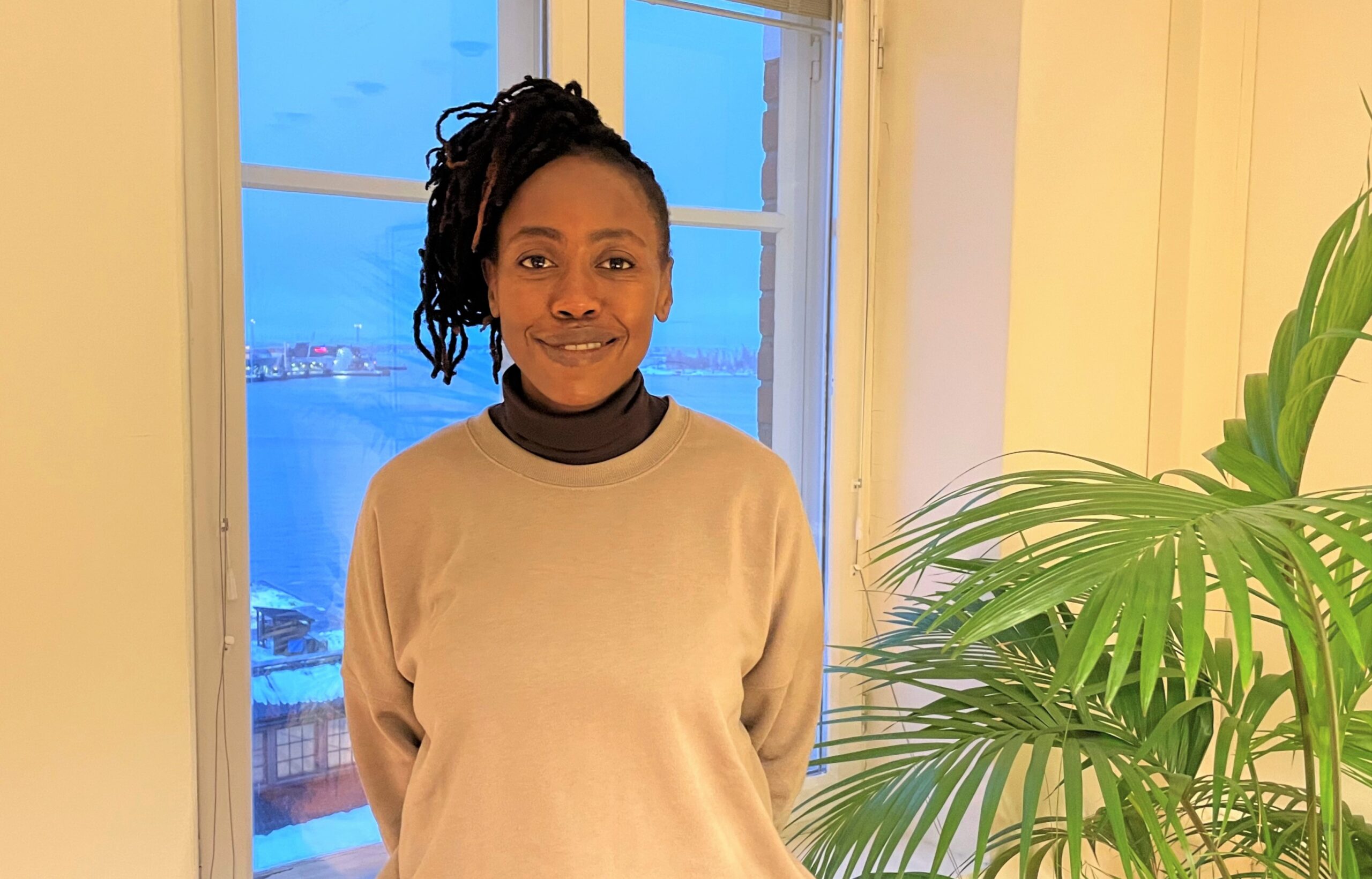Peace in Ethiopia is made of ownership

Head of the African Union’s Mediation and Dialogue Division, Mukondeli Mpeiwa, visited CMI Headquarters in Helsinki in December 2022.
In the beginning of November 2022, the African Union mediated a peace agreement between the Ethiopian government and Tigray People’s Liberation Front (TPLF). CMI has supported the AU-led process. Head of the AU Mediation and Dialogue Division Mukondeleli Mpeiwa talks about the importance of African ownership and the meaning of flexible partnerships in the work towards more sustainable peace.
The November of 2022 brought some light to a grim year, when the parties of the Ethiopian conflict signed a peace agreement that was mediated by the African Union (AU). Although the negotiations were intense, both parties committed consistently to the peace process, says Ms Mukondeleli Mpeiwa, Head of the AU Mediation and Dialogue Division.
“The process was extremely party-driven and owned, with the AU high level panel providing support. I think that enhanced the ownership and management of the transition from conflict to implementation of the peace agreement”.
Former President Olusegun Obasanjo of Nigeria was appointed as AU High Representative for the Horn of Africa in August 2021. President Obasanjo was fully engaged in resolving the Ethiopian conflict for almost 14 months and doing shuttle diplomacy between the government and the Tigrayan forces, Mpeiwa says. His efforts were strengthened in October 2022 when the AU appointed a high-level panel comprised of Uhuru Kenyatta, former President of Kenya, and Phumzile Mlambo-Ngcuka, former Deputy President of South Africa.
While Mpeiwa notes that there has been a lot of doubt internationally and even internally on whether the peace will hold, the parties have been committed and consistent in implementing the agreement since November. She believes that the key to this has been the notion that in the process the AU is merely a facilitator, not a creator of the peace.
“The negotiations on political questions can and should only be done by the Ethiopians themselves. They should define the kind of society that they are moving on with.”
Cooperation adds value in Ethiopia and elsewhere
Throughout the Ethiopian peace process, there has been a lot of interest in the process from multiple actors in the peacemaking field. According to Mukondeleli Mpeiwa, President Obasanjo has encouraged contributions from all actors since the beginning of his mandate. This however has been expected to be done in a coordinated structure to ensure everyone is “cooking in the same pot”. While different parties bring valuable ingredients, the control of the process should remain centralized.
“For us, that has always been at the heart of our engagement in this process. Even if we have partners and partnerships, the process should remain AU-led. The problem is African in nature and the solutions are also likely to be African, because we have different contextual understanding – not only on the issues but also practices.”
CMI has supported AU’s mediation work since 2009. Mpeiwa describes the cooperation between CMI and AU as broad and flexible, which enables more concise work.
“Contexts and priorities change depending on the realities that emerge almost on daily basis – you cannot predict insecurities.”
Other valuable Finnish partner in AU’s mediation work has been the Ministry for Foreign Affairs of Finland which has contributed by providing flexible funding. Together with the contributions from CMI and Finland, the AU has been able to strengthen its mediation processes, including throughout the Ethiopian peace process.
“We were able to facilitate initial consultations that were needed for the High Representative to better understand the conflict. That also gave us an opportunity to organize our own resources in a way that helped sustain the peace effort”, Mpeiwa says.
Mpeiwa highlights that enhancing the peacemaking capacities in Ethiopia as well as elsewhere in Africa is crucial for social and financial development in the continent.
“Our aim is that the regions can thrive and that there is stability that allows good business environment that is required for growth and prosperity.”
Peacemaking requires inclusivity
In their work, CMI and the AU share a common goal: to enhance women and youth participation in peace processes and conflict prevention.
The AU currently has two active networks that work towards inclusivity. The Network of African Women in Conflict Prevention and Mediation, also known as FemWise-Africa, was founded in 2017 and Wise-Youth network was launched in late 2022. According to Mpeiwa, the key priority of the networks is to increase female and youth representation in peace processes and to find opportunities for the networks to complement each other’s work.
Through FemWise-Africa, the Union has sent women peacemakers to contexts where they can contribute to peace efforts and the implementation of peace agreements. According to Mpeiwa, the mechanism has been used already in Chad, Sudan and South Sudan.
The youth network is still fresh but aims to push for intergenerational exchanges and cooperation for peace. Given the demography of the continent, African youth should be involved in peace processes as well as respected as equals.
“Young people should not be put in the box of being instigators or drivers of conflict”, Mpeiwa notes.
The aim in the inclusivity work is to ensure the participation of different segments of the society. Sustainable peace on the continent requires participation from all – which also benefits everyone in the region.
According to Mpeiwa, the Ethiopian peace process is an encouraging example of a peace process, where the AU has provided a platform that enables the parties to find the solutions among themselves. The implementation of the peace agreement has been slow, but is moving forward.
“We contribute to African development and aim to make all African citizens dividend in peace.” concludes Mpeiwa.